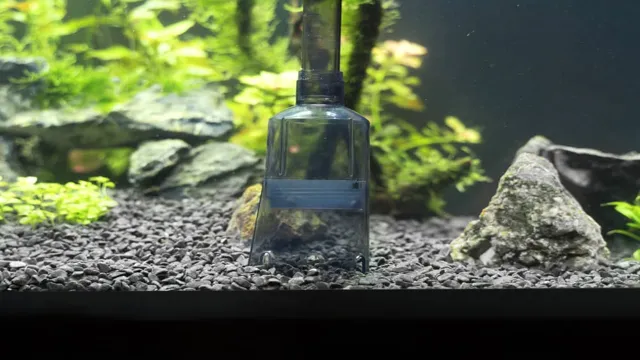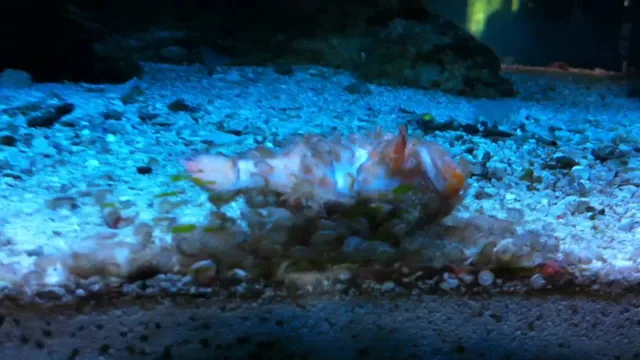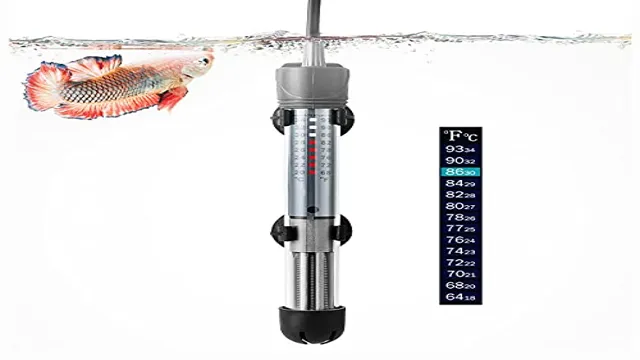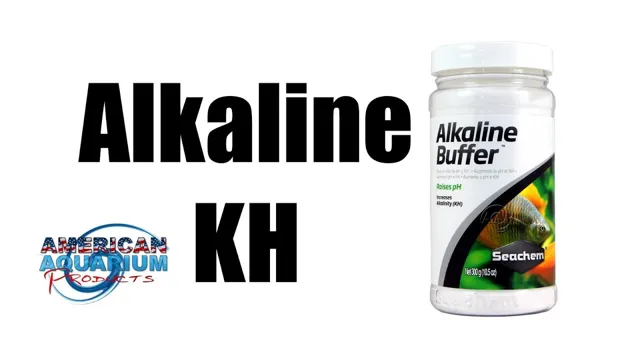Looking to add a small aquarium to your living space or office, but struggling with keeping it clean? A crucial part of maintaining a healthy aquarium is regularly cleaning the substrate and removing debris from the bottom of the tank. While there are plenty of store-bought aquarium vacuums available, making your own small aquarium vacuum can be a quick and affordable DIY project that keeps your tank sparkling clean. With a few household materials and a little bit of know-how, you can create a custom vacuum that suits the needs of your small aquarium.
Keep reading to learn how to make a small aquarium vacuum that will keep your tank healthy and your fish happy!
Gather Materials
To make a small aquarium vacuum, the first step is to gather the necessary materials. You’ll need a few items that you may already have lying around the house, such as a plastic bottle, a coat hanger, some flexible tubing, and a small mesh bag. You’ll also need a pair of scissors, pliers, and a hot glue gun.
It’s important to use a plastic bottle that is sturdy enough to handle the suction power needed to clean your aquarium properly. The coat hanger will be used to make a handle for the vacuum, so be sure to choose a sturdy hanger that can support the weight of the vacuum and the water inside the bottle. Once you have all your materials, you’ll be ready to start building your small aquarium vacuum.
Rubber Tubing
Rubber tubing is a versatile material that is used for a variety of applications, both in industrial and household settings. If you are planning on working with rubber tubing, make sure to gather all the materials you will need before getting started. The first thing you will need is the rubber tubing itself, which can be purchased at hardware stores, online, or at specialty stores.
You will also need a cutting tool, such as scissors or a utility knife, to cut the tubing to the desired length. Additionally, you may need fittings, clamps, or connectors depending on the specific project you are working on. Once you have gathered all the necessary materials, you can begin working with the rubber tubing.
It’s important to handle the tubing with care to prevent damage and ensure that it maintains its shape and flexibility. With the proper materials and techniques, rubber tubing can be a valuable asset for a variety of projects.
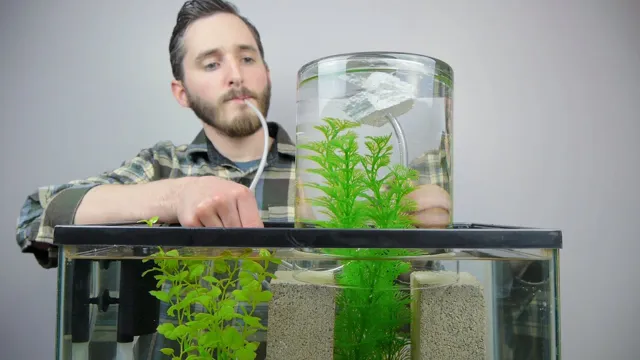
Plastic Bottle
If you want to make something useful out of a plastic bottle, you’re going to need a few materials to get started. First and foremost, you’ll need the bottle itself. Make sure it’s been thoroughly cleaned and dried to avoid any contamination.
You’ll also need a pair of scissors or a craft knife to cut the bottle into the shape you need. Depending on what you’re making, you may need glue or tape to hold the pieces together. Additionally, you may want to gather some decorative materials, such as paint, stickers, or fabric, to turn your plastic bottle creation into something truly unique.
With these materials and a little bit of creativity, the possibilities for what you can make out of a plastic bottle are almost endless!
Utility Knife
When it comes to using a utility knife, it’s important to make sure you have the right materials on hand. First and foremost, you’ll need a high-quality utility knife that feels comfortable in your hand and has a sharp blade. Along with the knife itself, you’ll also need replacement blades, as these tend to dull over time with frequent use.
Additionally, consider investing in a cutting mat or board to protect your work surface from damage and provide a stable cutting surface. If you’re planning on using your utility knife for crafting or intricate work, a ruler or straight edge can help you achieve precise cuts. And finally, don’t forget about the importance of safety gear: a pair of sturdy work gloves and safety glasses can help protect your hands and eyes while using your utility knife.
By gathering these necessary materials before you begin your project, you can ensure a smoother and more successful cutting experience with your trusty utility knife.
Glue Gun
When it comes to DIY projects, a glue gun is an essential tool that can make your work so much easier. But, before you dive into your project, it’s important to gather the necessary materials. You’ll need a glue gun, of course, but make sure you choose the right one for your project.
If you’re working on a delicate or intricate project, a mini glue gun with a thin nozzle may be your best option. On the other hand, if you’re working on larger projects, a high-temperature glue gun may be more appropriate. You’ll also need glue sticks that are compatible with your glue gun.
Make sure they’re the right size and type for your project, as using the wrong glue can result in weak bonds or damage. Finally, don’t forget to have a surface protector, such as a heat-resistant mat, on hand to protect your work surface. With these materials gathered, you’ll be ready to tackle any DIY project with your trusty glue gun.
Assembly
If you’re looking for a way to keep your small aquarium clean and healthy without spending a lot of money, making your own aquarium vacuum is a great option. Here’s how you can make a simple and effective vacuum using just a few basic materials. First, gather a clean plastic bottle, some airline tubing, and a short piece of PVC pipe. (See Also: How to Clean Aquarium Charcoal Filter in 5 Easy Steps)
Cut a small hole in the side of the bottle and insert one end of the PVC pipe, securing it in place with hot glue. Next, attach the other end of the PVC pipe to the airline tubing using a small piece of rubber tubing. With your vacuum assembled, you can now use it to remove debris and waste from your aquarium by siphoning water out of the tank and into the bottle.
As you work, be sure to watch carefully for any signs of stress or discomfort in your fish, and make adjustments as needed to ensure their health and happiness. With a little patience and practice, you’ll soon have a clean and beautiful aquarium you can be proud of, all thanks to your homemade vacuum!
Cut Opening in Bottle
Cutting open a bottle can be a tricky task, especially if you are trying to assemble something that requires access to the inside. However, with the right tools and caution, it can be done seamlessly. Firstly, choose the right type of cutter, whether it be a sharp knife or a specialized bottle cutter.
Secondly, mark the area you intend to cut with a marker or tape, ensuring the line is straight and even. Place the bottle on a flat surface, gently score the line with the cutter, and slowly apply pressure until the bottle separates. Remember to wear gloves and eye protection to avoid accidents and take your time to avoid shattering the glass unnecessarily.
By following these simple steps, you’ll have no problem cutting open a bottle for your next DIY project or assembly task.
Attach Tubing to Bottle
Attaching tubing to a bottle is an essential task when assembling a liquid dispensing system. It may seem like a simple step, but it’s crucial to ensure that it’s done correctly to prevent any leaks or spills. The first step is to select the appropriate tubing size for your system.
Once you have the right size, insert it into the bottle’s opening, making sure it’s tight and secure. If necessary, use a clamp or a rubber band to hold the tubing in place. It’s essential to ensure that the tubing is long enough to reach the bottom of the bottle to enable the liquid to flow efficiently.
Once the tubing is attached, make sure to test the system and check for any leaks or inconsistencies. By following these simple steps carefully, you can safely attach tubing to a bottle and assemble the dispensing system you need successfully.
Create a Seal with Glue Gun
Creating a seal with a glue gun can be a fun and creative way to add a personal touch to your crafts or projects. To get started, you’ll need a hot glue gun and sticks, a seal stamp, and sealing wax. First, plug in your glue gun and wait for it to heat up, then insert a glue stick and give it a few seconds to melt.
Once your glue gun is ready, take your seal stamp and press it into the hot glue, making sure to press firmly and leaving it there long enough for the glue to harden. Once your seal has cooled down, choose your sealing wax color and melt it in a spoon using a lighter or tea light candle. Then, pour the melted wax over your seal and let it dry for a few seconds before gently removing the seal stamp.
Voila! You now have a beautifully sealed and personalized creation. Just remember to be careful when using the hot glue gun to avoid any burns or accidents.
Using the Vacuum
Making a small aquarium vacuum is a quick and simple process that anyone can do with just a few basic supplies. First, you’ll need a narrow tube such as a piece of PVC piping or a turkey baster. Next, attach a piece of airline tubing to the end of the tube and connect it to a small siphon pump.
To use the vacuum, put the narrow end of the tube into the gravel or substrate at the bottom of the aquarium and turn on the pump. The suction created by the pump will pull the waste and debris up into the tube and through the airline tubing, where it can be collected in a bucket or other container. This method is a great way to keep your aquarium clean and healthy while also saving money by avoiding the use of expensive commercial vacuums.
So why not give it a try and see the results for yourself?
Submerge in Aquarium
If you own an aquarium, you know how important it is to keep the water clean and healthy for your fish and other aquatic creatures. Using a vacuum is an effective way to remove debris and waste from the bottom of your aquarium and promote a healthy environment for your underwater pets. To use the vacuum, start by attaching it to your aquarium and submerging the tube into the water. (See Also: How to Provide Oxygen in Aquarium: Tips and Techniques for a Healthy Environment)
Once the tube is inserted, start pumping the end that is outside the aquarium to make a siphon. As the water begins to flow through the tube, move it around the bottom of the aquarium to suck up any debris. Be sure to carefully remove the vacuum from the water to avoid disturbing the gravel or any plants in your aquarium.
By regularly using a vacuum to clean your aquarium, you can ensure that your fish and other aquatic creatures thrive in their underwater home.
Squeeze Bottle to Create Suction
If you’re looking for an easy and effective way to create suction, using a squeeze bottle can be a great option. By creating a vacuum inside the bottle, you can use its suction power to pick up small items like seeds or dirt. To do this, fill the bottle with water and then squeeze out as much air as possible.
Place the tip of the bottle against the item you want to pick up and release your grip on the bottle. As the water rushes back in to fill the space left by the squeezed air, it creates a vacuum that draws in the item. This technique can be especially useful for gardening or cleaning up spills around the house.
Just make sure to clean and dry the bottle thoroughly before each use to prevent contamination.
Suction Debris from Aquarium
Suctioning debris from your aquarium is an important part of maintaining a healthy aquatic environment for your fish. To do this, you’ll need a vacuum specifically designed for aquarium use. The vacuum works by using suction to draw up any debris or uneaten food from the bottom of your tank.
It’s important to use a vacuum regularly, as buildup of debris can lead to the growth of harmful bacteria and algae. When using the vacuum, start in the corner of the tank and work your way around, being careful not to disturb your fish or any sensitive plants. The process may seem daunting at first, but with a little practice, it will become a quick and easy part of your routine.
Don’t forget to take care of your vacuum by cleaning it thoroughly after each use to ensure its effectiveness in the future. Happy cleaning!
Maintenance Tips
If you’re a fish enthusiast with a small aquarium, you know the importance of maintaining a clean and healthy environment for your aquatic friends. While purchasing a vacuum can be expensive and overwhelming, making your own small aquarium vacuum is easy and cost-effective. Start by collecting a clean plastic bottle, a long piece of PVC piping, and a rubber band.
Cut off the bottom of the bottle and drill several small holes in the cap. Attach the PVC piping to the cap with the rubber band, and your vacuum is complete. Begin by inserting the PVC piping into the substrate of your aquarium and pulling up slowly, allowing the debris to fall into the bottle through the drilled holes, while keeping your fish safe in their habitat.
With this simple and effective solution, you can ensure that your aquarium stays clean and healthy for your fish to thrive in. Plus, the satisfaction of designing your own solution is a fun additional bonus!
Clean after Each Use
If you want to ensure the longevity and effectiveness of your appliances and tools, it’s vital to keep up with their maintenance. One easy task you can do after every use is to clean them thoroughly. Whether it’s a kitchen gadget, a power tool, or an electronic device, taking the time to wipe, scrub, or dust off any dirt, grease, or residue can prevent buildup and corrosion.
It can also improve their performance and safety, as dirty parts can affect their mechanics and even cause hazards. Moreover, cleaning after each use can save you time and effort in the long run since accumulated grime can be harder to remove and may require more intensive methods. So, make it a habit to include cleaning in your post-use routine, and you’ll increase the chances of having a smooth and functional appliance for years to come.
Replace Tubing if It Becomes Damaged
Maintaining your tubing is crucial when it comes to ensuring the longevity of your equipment. Over time, tubing can become damaged due to various factors, including wear and tear, abrasion, and exposure to harsh chemicals. When tubing becomes damaged, it can affect the effectiveness of your entire system, leading to potential leaks, inefficiency, and even hazardous conditions.
That’s why it’s essential to replace tubing if it becomes damaged. Not only will this prevent further damage but it will also improve the performance of your system. So, if you notice any signs of damage on your tubing, such as cracks, holes, or punctures, make sure to replace it right away.
By doing so, you can ensure the safety and reliability of your system for years to come. Remember, preventative maintenance is always better than reactive troubleshooting. (See Also: How to Get a Glass Background Off a Aquarium: Simple Steps for Removing Aquarium Decals)
Store in a Dry Location
When it comes to maintaining your belongings, storing them in a dry location is crucial. Moisture and humidity not only cause damage but also promote the growth of mold and mildew, which can be harmful to your health. It’s essential to keep your items in a dry storage space, such as a closet or a cabinet, to prevent any potential damage.
You can also use moisture-absorbing products such as silica gel packets or dehumidifiers to keep the area dry. Furthermore, always make sure to dry your belongings thoroughly before storing them away. By following these simple maintenance tips, you can keep your belongings in top condition and avoid any potential damage caused by moisture and humidity.
Remember, prevention is always better than cure, and taking proper care of your items is the key to ensuring their longevity.
Conclusion
In conclusion, making a small aquarium vacuum isn’t rocket science. All you need is a bit of imagination, some household items, and a fish tank that needs cleaning. By using a simple plastic tube, an old turkey baster, and some cheesecloth, you can easily create a makeshift suction system that will remove all the gunk and debris from your aquatic habitat.
So don’t let a dirty fish tank get you down – with this DIY vacuum, your fish friends will be swimming in crystal clear waters in no time!”
FAQs
What is a small aquarium vacuum?
A small aquarium vacuum is a tool used to remove debris and waste from aquariums.
How do I make a small aquarium vacuum at home?
To make a small aquarium vacuum at home, you can use a plastic bottle, tubing, and a small air pump. Cut the bottle in half and attach the tubing to the top of the bottle. Connect the tubing to the air pump and you have a homemade aquarium vacuum.
Is it necessary to have a vacuum for a small aquarium?
Having a vacuum for a small aquarium is not necessary but recommended to keep the aquarium clean and healthy.
Can I use a regular vacuum to clean my small aquarium?
No, using a regular vacuum is not recommended as it can harm the aquatic life in the aquarium.
How often should I use a small aquarium vacuum?
It is recommended to use a small aquarium vacuum every 2-4 weeks, depending on the size of the aquarium and the amount of debris present.
Can I use a small aquarium vacuum for a large aquarium?
No, a small aquarium vacuum is designed for small aquariums only. For larger aquariums, a larger vacuum or cleaning tool may be required.
What other cleaning tools do I need for my small aquarium?
In addition to a small aquarium vacuum, other cleaning tools you may need include a fishnet, algae scraper, and water conditioner.

